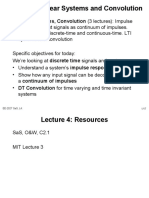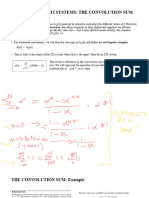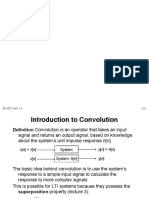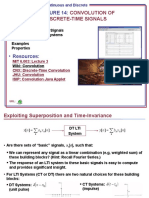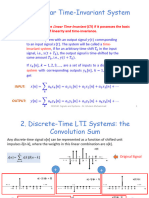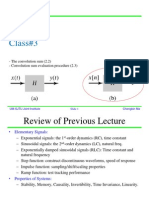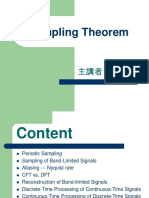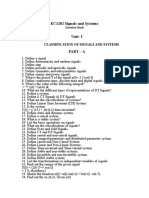0% found this document useful (0 votes)
39 views49 pagesSignal and Systems Lecture 2
The document is a lecture on Linear Time-Invariant (LTI) Systems, covering topics such as convolution of discrete-time and continuous-time LTI systems, properties of convolution, and the representation of signals using impulses. It introduces the fundamental concepts of LTI systems, including their significance in modeling real-world systems and the mathematical operations involved. Examples are provided to illustrate the convolution process and its properties.
Uploaded by
tedrosabrha44448909Copyright
© © All Rights Reserved
We take content rights seriously. If you suspect this is your content, claim it here.
Available Formats
Download as PDF, TXT or read online on Scribd
0% found this document useful (0 votes)
39 views49 pagesSignal and Systems Lecture 2
The document is a lecture on Linear Time-Invariant (LTI) Systems, covering topics such as convolution of discrete-time and continuous-time LTI systems, properties of convolution, and the representation of signals using impulses. It introduces the fundamental concepts of LTI systems, including their significance in modeling real-world systems and the mathematical operations involved. Examples are provided to illustrate the convolution process and its properties.
Uploaded by
tedrosabrha44448909Copyright
© © All Rights Reserved
We take content rights seriously. If you suspect this is your content, claim it here.
Available Formats
Download as PDF, TXT or read online on Scribd
/ 49


